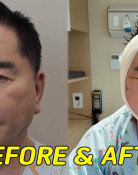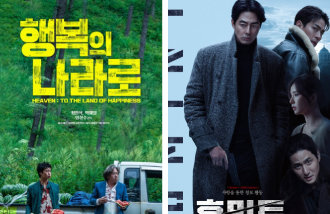Liquor with Soul and Affection
Liquor with Soul and Affection
Posted September. 24, 2004 22:08,

Liquor is not always the main reason to hold a drinking meeting. While liquor does elevate ones mood, it does not mean it should be a purpose of a meeting. Moreover, soju, beer, and bomb shots, which are considered to represent our society these days, are much disqualified for that kind of purpose.
Our traditional liquors, which we have forgotten about due to our drinking culture that forces hastily drinking down our throats, are introduced by an author who traveled all over the nation looking for them.
Baekqwaju, made from a hundred flowers of a hundred plants, jookryokko, made of bamboo oil, ipsaegokju, made of cherry and pear leaves and mugwort (Injin), moosoolju, made of boiled dog meat, jipgarisool, surviving illicit brewing crackdowns, gwahaju, a Korean-style cocktail; all are unfamiliar names but precious nonetheless.
The author puts these traditional liquors in the list of things we should appreciate, not because they are ours, but because their qualities make them deserve such appreciation.
The hundred flowers used in baekqwaju can be collected only after a whole years search in the mountains as each of the flowers blooms in a different season. Some flowers shrink to the size of a sesame seed when dried, so it is not easy to obtain the desired volume. Jookryok, which is oil abstracted from boiled bamboo, is also hard to cultivate. To get this oil, one has to bury jars filled with bamboo sticks underground and cover them with chaff, making them resemble tombs. Then, they are boiled for four days. It is hard to find a meal or drink that requires such an effort to make.
Liquors made through such tedious processes become medicine for our body.
Our ancestors believed that ipsaegokju helped to clear ones head, so they took it in a gourd bottle with them when they went to take the state examination (called gwageo) and drank it a night before the exam. Chun Bong-joon, the mung-bean general, is known to have asked for ipsaegokju when he was arrested. He asked not to forget his pain through drinking, but because he believed that it would be good for his leg that was wounded by a Japanese sword. Ipsaegokju was liquor that helped the general keep his spirits high. Moosoolju is known to be good for the elderly and their longevity when a small cup is taken before or after their meals.
It is obvious that these liquors will not be consumed excessively, since they are for ones health; therefore, there would be no delirium tremens from drinking too much alcohol.
Hansan sogokju is known to get one drunk, starting from the ends of ones toes and hands when taken, leaving the head intact. For this reason, our ancestors were able to get drunk and still enjoy poems with a clear mind in a drunken body. This gives an interesting contrast with todays liquors that make us drunk in the head, yet leaving our hands and feet functional to wield under the control of a drunken mind.
What is more is that our ancestors followed a drinking etiquette called hyang-eumjooryei. They drank in a manner of drinking one glass accompanied by a hundred bows. A host had to follow 102 steps in order to serve a drink to his guest.
Nonetheless, it is not necessary to think of traditional liquors in too much of a serious manner. What the author wants to emphasize is not the traditional liquors per se, but the processes of making, drinking, and admiring them. He regrets that as these traditional liquors have disappeared, the accompanying culture has also been lost. He puts forth his efforts to rediscover our carefree spirits that we used to enjoy while making these liquors of sweet, bitter, and sour tastes and absolving them into our mind and body.
Even those who dont enjoy drinking can learn interesting facts about liquors from this book. For instance, one can learn that boo-eui-joo has in its name the letter eui that means ant because the liquor, when it is ripe, has rice grains floating in it that resembles ants. It is better known as dongdongjoo. This book has a power that urges one who loves drinking to pack right away and to run to the hometown origins of one of these liquors.
Dong-Yong Min mindy@donga.com



![보일러 풀가동해도 춥다?…난방비 폭탄 범인은 ‘이것’ [알쓸톡]](https://dimg.donga.com/c/138/175/90/1/wps/NEWS/IMAGE/2025/12/24/133029046.3.png)



